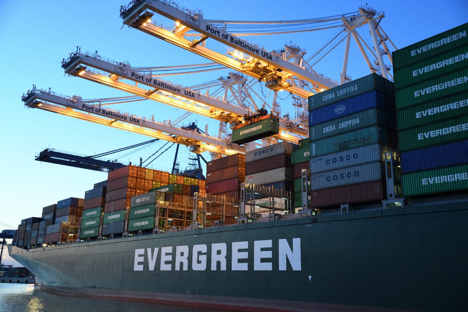
What is Intermodal Freight Transportation?
Intermodal freight transportation refers to goods and cargo that is transported from one place to another using multiple means of transport such as trucks, railway trains, or ships. Usually, this type of cargo is large in size. It is also defined as the total movement of cargo using inland transport over a given network.
This mode of transport is used when large distances have to be covered, and the items are large such as furniture, appliances even vehicles such as cars and bikes. Containers that are meant for intermodal freight transport follow international organizations for standardization for its dimension guidelines.
This allows the cargo to remain untouched and in the same container in between the switches between transport modes rather than be moved to a different sized container. This ensures that the goods remain untouched and unhandled. This is an efficient and economical method of transport, and it has the following advantages mentioned below.
Advantages of Intermodal Transport
- • The freight is loaded into a container and then transported using the required modes of transportation without physically handling the goods. This prevents any damage to the goods and helps in an efficient and quick delivery.
- • Since a train is involved, this lowers fuel cost by a significant amount, more than any other mode of transport. Hence making it economically better.
- • It is a speedy delivery system.
- • It reduces loss and misplacement of goods.
- • The destination options for this mode are many, as railway systems are extensive and cover a vast area.
- • It is economically friendly and a sustainable method.
- • The future of all shipping will be intermodal transport as it is cost-saving and faster than all other methods.
Disadvantages of Intermodal Transport
- • Heavy-duty cranes are required to lift the containers off the trucks to load and offload ships and trucks during a change in the mode of transport. This is done directly without the physical handling of any cargo.
- • Proper infrastructure is required where there is road and railway access connecting to seaports so that trucks and trains can load and unload cargo.
- • Once containers are offloaded from the train or ship, they are then transported to their final destination via trucks.
Once the containers have been loaded onto trucks, they are then transported to their respective destinations. Whether a distribution office or a residence, trucks deliver goods to their final destination. Trucks are the final mode of transport and bring goods to the next delivery phase.
To Wrap it Up
Intermodal transport is a successful and efficient method of transportation of goods and raw materials by air, land, or sea. It is the preferred method of freight transport and is being widely used today. Due to its many advantages, the future of transport will be primarily intermodal as it is cost-effective and provides the quickest delivery.